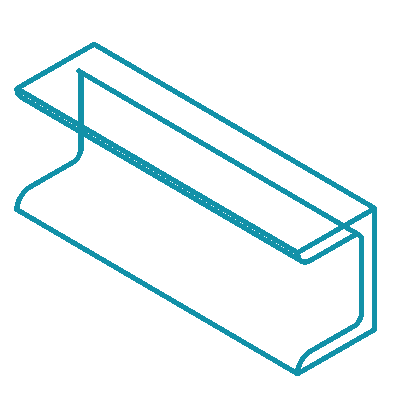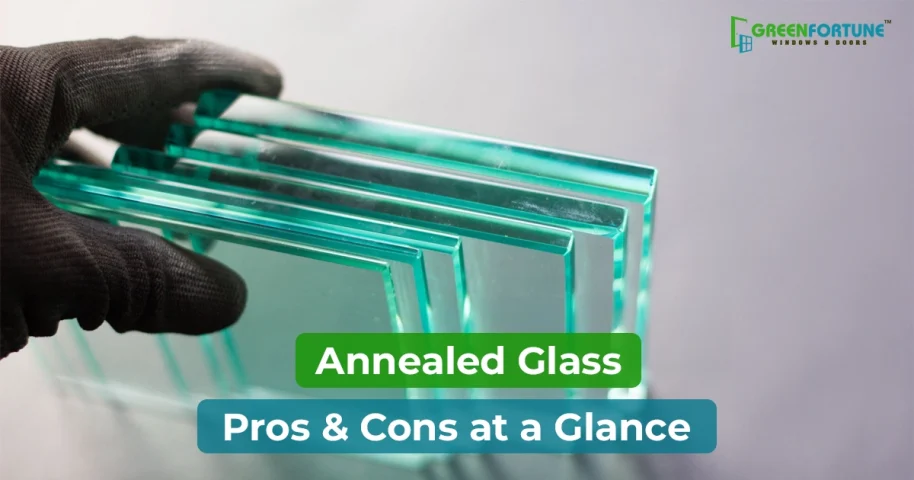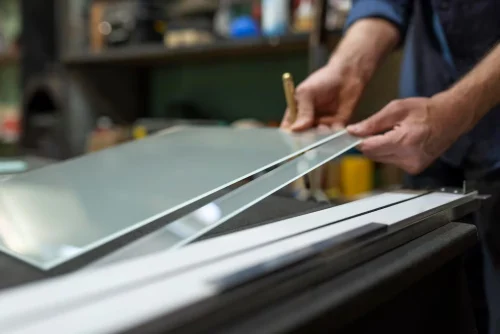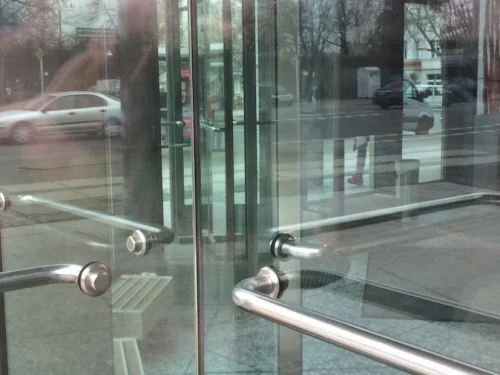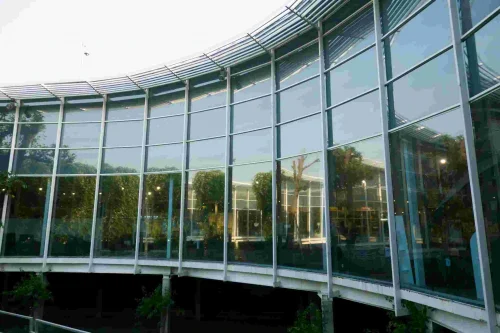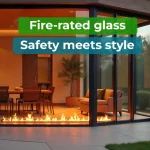
Everything You Need to Know About Fire Rating Glass
April 1, 2025
What is Floating Glass? Pros & Cons
April 1, 2025Annealed glass is the most common type of glass used in construction and various household applications. This type of glass is created through a process called annealing, where the glass is slowly cooled after being heated during its production.
The process allows internal stresses to be relieved, making the glass stable and easy to cut. While annealed glass is widely used, it's not always the best option for applications where strength and safety are essential.
In this article, we’ll explore the pros and cons, compare it with other types like toughened glass, and take a deep dive into its uses, cost, and frequently asked questions.
How is Annealed Glass Made?
It is produced by heating raw glass to a temperature of around 600°C, then cooling it slowly over time. The slow cooling allows any stress within the glass to dissipate, ensuring that it does not crack or break unexpectedly during normal use.
Here’s how the process works:
- Heating: The glass is heated in a furnace to a high temperature of around 600°C.
- Cooling: The glass is cooled gradually over several hours, which allows the internal stresses to balance out.
Result: The glass becomes less likely to break during cutting and shaping. It is commonly used in windows, mirrors, and many other household applications.
Annealed Glass vs Toughened Glass
It is often compared to toughened glass, also known as tempered glass, due to the latter's enhanced strength and safety features. While it is easier to work with and less expensive, toughened glass is up to five times stronger and breaks into small, blunt pieces rather than sharp shards when shattered.
Key Differences:
Aspect | Annealed Glass | Toughened Glass |
Strength | 3,500–7,000 psi | 10,000–15,000 psi |
Breakage Behavior | Large, sharp shards | Small, blunt pieces |
Cost per sq. ft. | ₹200–₹400 | ₹500–₹1,000 |
Cutting/Customization | Can be cut after production | Cannot be cut after production |
Applications | Windows, table tops, mirrors | Glass doors, facades, partitions |
Example:
If you have a glass partition in an office that could experience heavy foot traffic, it may not be the best choice due to its low impact resistance. Toughened glass, on the other hand, would withstand accidental impacts and provide better safety.
Pros of Annealed Glass
- Affordability
One of the biggest advantages of this glass is its cost-effectiveness. It’s a popular choice for builders and homeowners looking for an economical solution for windows, mirrors, and furniture. Compared to toughened glass, annealed glass is much cheaper, making it a great option for non-critical applications. - Easily Customizable
It is easy to cut and shape post-production, which makes it highly versatile. It can be cut into various sizes and shapes for use in toughened glass windows, toughened glass doors, picture frames, shelves, and table tops. - Wide Availability
Itis widely available and can be used in various residential and commercial applications, including windowpanes, doors, and even solar panels.
Cons of Annealed Glass
- Low Strength
This glass is significantly weaker compared to toughened glass. It can break easily upon impact, making it unsuitable for high-traffic areas, especially where safety is a concern. Its resistance to pressure and bending is also lower than that of laminated or toughened glass. - Safety Concerns
When annealed glass breaks, it shatters into large, sharp pieces that can cause serious injury. In applications where safety is critical, such as doors or facades, toughened glass or laminated glass is a much safer option.
Limited Applications
Due to its relatively low strength, it cannot be used in certain applications that require enhanced durability. For example, in high-rise buildings or areas with heavy foot traffic, toughened or laminated glass is preferred.
Applications of Annealed Glass
Despite its limitations, this glass has a wide range of applications due to its affordability and ease of customization.
Residential Windows
In residential settings, it is commonly used in windows where the need for strength is not a primary concern. For example, upper-floor windows or windows that are not exposed to high impact are ideal for annealed glass.
Interior Design Elements
This glass is often used in decorative glass elements such as mirrors, shelves, and tabletops. Its flexibility in terms of cutting and shaping makes it a popular choice for interior design projects.
Furniture
It is also used in furniture design, such as for glass tables or cabinet doors. In these cases, the glass is typically not subject to significant stress, making annealed glass a cost-effective solution.
Glass Partitions
It is sometimes used for interior partitions, but in areas where there is a risk of impact (e.g., offices or high-traffic commercial areas), toughened glass is a better option.
Conclusion
Annealed glass is a versatile and cost-effective material used in a variety of applications, from residential windows to decorative interior elements. While it’s affordable and easy to work with, its lack of strength and safety features make it less suitable for high-impact or safety-critical areas. For areas where durability and safety are important, toughened glass or laminated glass is a much better option.
Green Fortune: A Trusted Partner for Toughened Glass Solutions
At Green Fortune, we offer a wide range of eco-friendly and high-performance solutions for your home or office. While annealed glass is a great choice for cost-effective projects, our uPVC glass doors and windows provide superior safety and durability.
Whether you're looking to enhance your interiors or upgrade your windows, Green Fortune has you covered with high-quality materials that combine beauty, performance, and sustainability. Explore our catalog today and bring lasting value to your spaces.
FAQs
- How durable is annealed glass?
It is moderately durable for regular use but is more prone to breaking compared to tempered glass. It can withstand light impacts but shatters into large shards when broken, making it less suitable for high-stress areas. - Is annealed glass tempered?
No, it is not tempered. It is regular glass that has been slowly cooled to relieve internal stresses, whereas tempered glass is heat-treated for added strength and safety. - Is annealed glass expensive?
Annealed glass is generally more affordable than tempered or laminated glass. Its lower cost makes it a popular choice for basic applications like windows and mirrors. - What are the properties of annealed glass?
It is clear, smooth, and easy to cut. It is less resistant to impact and breaks into sharp, large shards when shattered, unlike tempered glass, which crumbles into smaller, safer pieces. - Is annealed glass safe for shower screens?
No, it is not recommended to use it for shower screens due to the risk of shattering. Toughened glass is a safer option for shower enclosures because of its strength and safer breakage pattern.
Can annealed glass be strengthened after installation?
No, annealed glass cannot be strengthened after it has been installed. If you need stronger glass, you would need to choose toughened glass or laminated glass at the time of purchase and installation.


